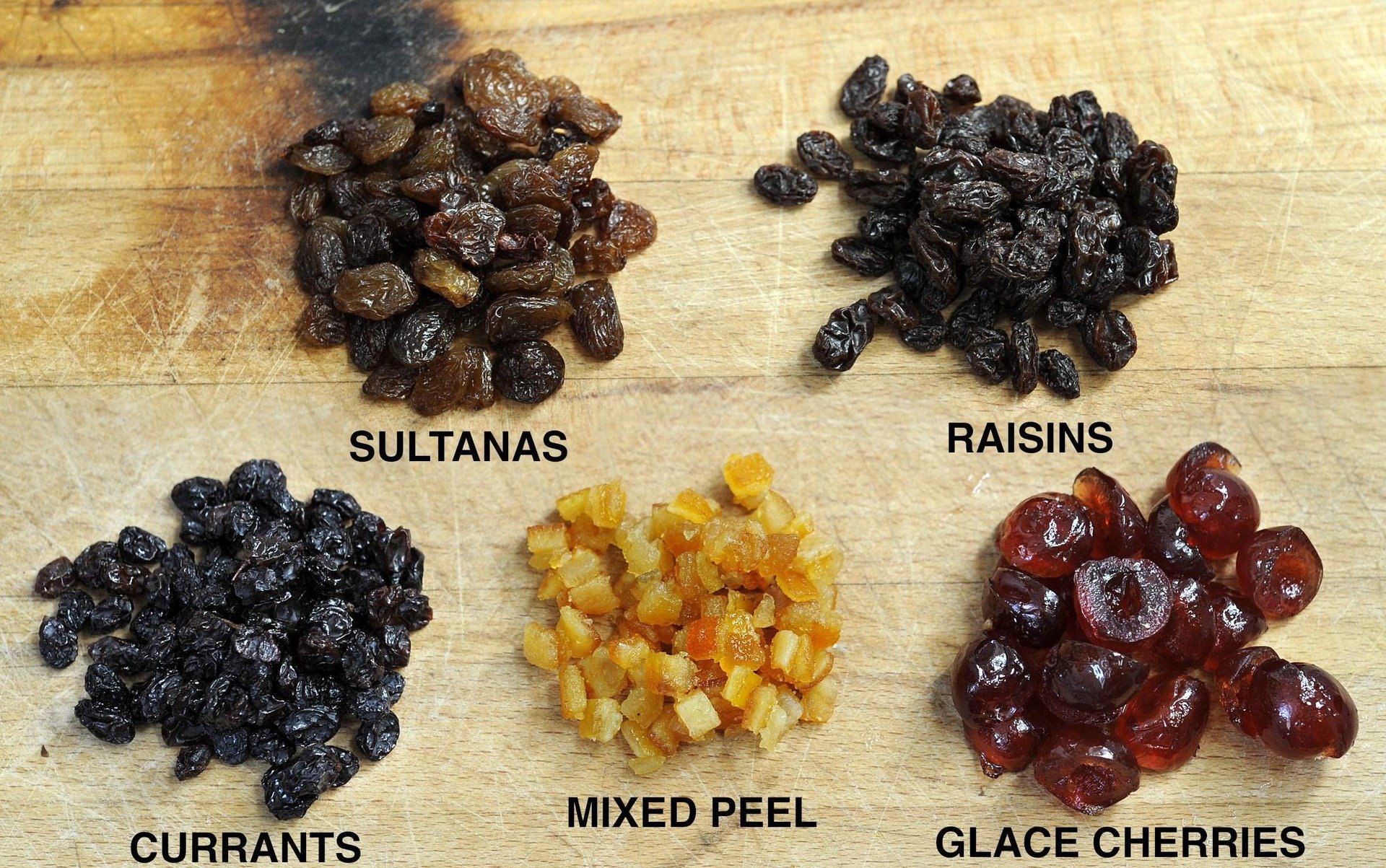Sultana Abdul Jabbar: Unwrapping The Story Of Golden Raisins And A Historical Event
Have you ever wondered about the origins of those lovely, sweet golden raisins you enjoy in your snacks or baked goods? Well, the word "sultana" itself holds quite a fascinating story, and it's almost a little bit surprising how much history can be tied to a simple dried fruit. We're going to take a closer look at what makes sultanas special, how they come to be, and even touch upon a significant historical event that shares the very same name. It's really quite something when you consider it.
You see, when folks might be curious about "sultana abdul jabbar," it often leads them down a path of discovery about these delightful golden treats. These aren't just any dried grapes; they have a distinct character all their own. Understanding them means appreciating their unique journey from vine to your pantry, and that's actually a pretty cool thing to think about.
So, let's explore the world of sultanas, a culinary staple for so many, and also acknowledge a moment in history that stands out, all connected by this one evocative word. It’s a journey that touches on everyday delights and poignant memories, too. You might just learn something new that makes your next handful of golden raisins even more interesting.
- Dencia Net Worth
- Sunny Hostin Before Surgery
- Naomi Scott Ethnicity
- Blake Shelton Salary On The Voice
- Adrian Holmes Wife
Table of Contents
- What Are Sultanas? The Golden Delight
- The Sultana Disaster: A Chapter in History
- Frequently Asked Questions About Sultanas
- Exploring the Broader Context
What Are Sultanas? The Golden Delight
Sultanas, you know, are basically dried white grapes. They are of the seedless variety, which is pretty handy, making them a very popular choice for many. They typically have a beautiful golden color, and in a way, they tend to be much plumper than some other dried fruits. This plumpness, combined with their inherent sweetness, really sets them apart from darker raisins, you know?
In the United States, it's quite common for people to call sultanas "golden raisins" or even "sultana raisins." This helps distinguish them, I suppose. A key thing about these grapes is that they are often treated with a preservative, which is sulfur dioxide. This treatment is pretty important because it helps them keep that lighter, appealing color of the original grape, otherwise they might turn a bit darker during the drying process. So, that's why they look so bright and inviting, actually.
A sultana, by its very nature, is known for that light golden color, its plump appearance, and a sweeter flavor profile compared to those darker raisins you might find. They really do stand out. Similar to grapes, sultanas are sold in both their fresh fruit form and, of course, as dried fruit. This versatility is, in a way, quite impressive, offering different ways to enjoy them. They are, you know, light green in color when fresh, very much like grapes themselves. It's just a little bit neat how they transform.
How Sultanas Are Made
To create sultanas, grapes are typically dried. This process can happen in a few different ways, but the goal is always to remove the moisture, concentrating those natural sugars and giving them that chewy texture we all love. It's not just a simple matter of leaving them out, you know. Commercial sultana production, for example, often involves specialized equipment and facilities. This is pretty important because it helps make sure the quality stays consistent, and that everything is safe for us to eat, which is a big deal, really.
The method of drying is what really helps define their characteristics. Whether it's sun-drying or mechanical drying, each approach plays a role in the final product's texture and sweetness. This careful process is what gives sultanas their signature plumpness and that very sweet taste. It’s a bit of an art, if you ask me, to get them just right.
These grapes, once dried, become a key ingredient in a truly wide range of culinary applications. From baking up delicious treats to just grabbing a handful for a quick snack, or even incorporating them into various cooking dishes, they are incredibly versatile. You can, for example, purchase sultanas at most grocery stores, which makes them quite accessible for everyone to enjoy. They are a staple in many kitchens, and for good reason, too.
Culinary Uses for Sultanas
Sultanas are, honestly, incredibly popular in the kitchen, and for very good reason. Their natural sweetness and plump texture make them a fantastic addition to all sorts of recipes. Think about baking, for instance. They are a star in things like fruitcakes, muffins, and cookies, adding that lovely burst of sweetness and a bit of chewiness. It's amazing how they can elevate a simple baked good, really.
Beyond baking, sultanas are also a wonderful snack all on their own. Just a handful can provide a quick energy boost, and they are, in a way, a healthier alternative to many processed snacks. They are easy to carry around, too, which makes them perfect for on-the-go moments. People often just grab them straight from the bag, and that's perfectly fine.
And then there's cooking! Sultanas can be used in savory dishes, believe it or not. They often appear in Middle Eastern or Indian cuisine, where their sweetness balances out spicy or rich flavors in tagines, curries, or even rice pilafs. It's a bit unexpected for some, but they add a delightful dimension. So, their use is really quite broad, from sweet to savory, which is pretty cool.
The Sultana Disaster: A Chapter in History
While we often think of "sultana" in the context of a sweet dried fruit, there's also a profound historical event that shares the name: the Sultana disaster. This was a truly tragic steamboat explosion that occurred on the Mississippi River, near Memphis, Tennessee, back in April of 1865. It's a moment in history that, in a way, often gets overshadowed by other events of its time, but its impact was immense.
The steamboat Sultana was carrying an incredibly overloaded number of passengers, mostly Union soldiers who had just been released from Confederate prisoner-of-war camps, heading north to go home. The conditions on board were, by all accounts, just horrific. The boilers on the ship were apparently in poor repair, and they exploded, causing a massive fire. The sheer number of lives lost makes it one of the worst maritime disasters in United States history, even more so than the Titanic, which is pretty sobering to think about.
The Sultana disaster has, in fact, been acknowledged by congressional resolution. This recognition highlights the severity of the event and the significant loss of life that occurred. It's a somber reminder of the dangers of overcrowding and mechanical failure, and the human cost involved. The tragedy happened on the Mississippi River, you know, near places like St. Louis and New Orleans, which were key points on the river at that time. It's a stark reminder of a very difficult period.
Even though the word "sultana abdul jabbar" might bring to mind various thoughts, understanding the historical significance of the Sultana disaster adds a very different layer to the term. It's a powerful story of human suffering and resilience, and it's important to remember these moments from our past. This event, honestly, serves as a poignant footnote in American history, reminding us of the fragility of life and the consequences of negligence.
Frequently Asked Questions About Sultanas
When people hear the word "sultana," they often have some common questions. Here are a few that come up quite a bit, offering a little more clarity about these popular golden raisins.
Are sultanas the same as raisins?
Well, in a way, they are a type of raisin, but not all raisins are sultanas. Sultanas are specifically made from seedless white grapes and are typically treated with sulfur dioxide to keep their light, golden color. Regular raisins, you know, can come from various types of grapes and are usually darker because they aren't treated in the same way. So, while they're both dried grapes, they are a bit different in their appearance and often in their sweetness, too.
Why are sultanas called "golden raisins" in the US?
They are referred to as "golden raisins" or "sultana raisins" in the US to help distinguish them from the darker, more common raisins. It's a descriptive name that really highlights their unique golden color. This helps consumers quickly identify them, which is pretty useful. It’s just a way of making things clear, you know, for people shopping in grocery stores.
What is the significance of the Sultana disaster?
The Sultana disaster is significant because it was one of the worst maritime disasters in United States history, causing an immense loss of life. It involved the explosion of a steamboat carrying a huge number of Union soldiers returning home after the Civil War. The event has been acknowledged by congressional resolution, underscoring its historical importance and the tragic human toll. It's a very sad chapter, truly.
Exploring the Broader Context
When we think about "sultana abdul jabbar" as a search term, it really opens up a world of connections, from the delightful fruit to historical events. The journey of the sultana grape, from a light green fruit on the vine to the plump, golden dried treat, is a testament to agricultural ingenuity and processing techniques. It’s quite a process, honestly, to get them just right for our tables.
The culinary versatility of sultanas means they find their way into so many different dishes across cultures. They are a staple in baking, adding that sweet, chewy bite to cakes and breads. They are also a handy snack for busy days, providing quick energy. And, in a way, their ability to complement savory dishes is a bit of a surprise to some, showing just how adaptable they are in the kitchen. They really are a versatile ingredient.
Then, of course, there's the poignant historical narrative of the Sultana disaster. This event, though unrelated to the fruit, shares the name and serves as a powerful reminder of a past tragedy. It highlights the importance of safety and careful planning, and it's a story that, in a way, resonates with us even today. Learning about such events helps us appreciate the complexities of history, too.
It's interesting how a single word can connect such diverse topics. Whether you're enjoying a handful of sweet golden raisins or reflecting on a significant historical moment, the term "sultana" has a rich tapestry of meaning. We hope this exploration has offered a little more insight into these varied aspects. You can learn more about sultanas on our site, and perhaps even discover a new recipe or two that uses these wonderful golden gems. And for those interested in historical events, there's always more to explore about significant maritime incidents.
- Costas Mandylor Wife
- Paul Simon Net Worth
- Shiloh Jolie Pitt Gender
- Brandi Passante Boobs
- Nosey Neighbors Of Elkhart County

Sultanas - Mais Receitas - Cozinhar é fácil

Sultanas

Sultana lanceert nieuwe verpakking met frisse look